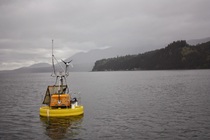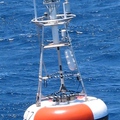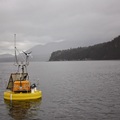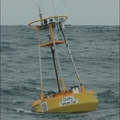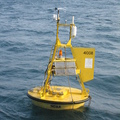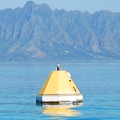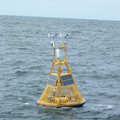Dabob
NANOOS ORCA buoy in Dabob Bay (47.80°N, 122.80°W)
Puget Sound has experienced significant anthropogenic impacts, including issues associated with invasive species, pollutants, and significantly altered freshwater, acid deposition, nutrient run-off, and sediment contamination as a result of the approximately five million people living in the watershed. These impacts need to be studied to better understand how the Sound and its many ecosystem services might change in the future. Data from autonomous buoys help us to see how variable water properties are and thus what properties might be affecting them. Hood Canal is a long narrow estuary on the western side of Puget Sound. It receives river and groundwater input, is only connected to the Sound at the northern end, and flushes relatively slowly. Chemical properties of the waters in this estuary are subject to fluctuations over a full range of time scales from hours to years.
Dabob Bay is the site of one of the few shellfish hatcheries in the Pacific Northwest. Recent observations of the lack of shellfish settlement have prompted growers to declare an “oyster emergency.”
To better understand the effects of ocean acidification on shellfish within Puget Sound, the Puget Sound Partnership, with funds from the Environmental Protection Agency, has supported the Puget Sound Restoration Fund, UW, NOAA, Pacific Shellfish Institute, Washington Department of Ecology, Taylor Shellfish, and Baywater, Inc., to conduct collaborative studies investigating whether or not corrosive seawater is affecting shellfish populations. This work monitored both water conditions and shellfish larval settlement at two locations with important shellfish populations, Dabob Bay and Totten Inlet, during the growing seasons in 2009 and 2010.
A MAPCO2TM system was installed on an Oceanic Remote Chemical Analyzer (ORCA) buoy in a small bay off the northern end of Hood Canal called Dabob Bay on July 22, 2010 as a collaborative effort between PMEL's carbon group and University of Washington's ORCA Group . This buoy is part of the NANOOS network. The Oceanic Remote Chemical Analyzer (ORCA) is an autonomous moored profiling system providing real-time data streams of water and atmospheric conditions. It consists of a profiling underwater sensor package with a variety of chemical and optical sensors, and a surface mounted weather station, solar power system, winch, and custom computer and software package equipped with WIFI/cellular communication. Please visit the ORCA website for more Dabob buoy information and other sensor data.
Finalized Data: National Centers for Environmental Information NCEI.

